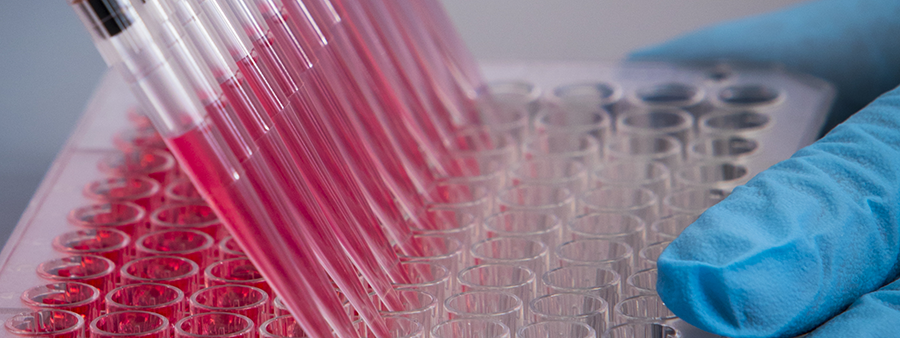Research

Regenerative Medicine — Biomaterials and Tissue Engineering
Combining knowledge in cell and molecular biology, physiology with biomaterials, biomechanics and biotransport phenomena, regenerative medicine aims to understand the mechanical, structural and biological processes associated with designing and developing systems to repair or replace damaged organs and tissues. Current research activities address aspects of cellular engineering, biomaterials and tissue engineering.
- Cardiovascular Tissue Engineering
(Associate Professor Lauren Black)
Dr. Black's research interests lie in understanding the biophysical signaling mechanisms responsible for the development of healthy and diseased myocardium inclusive of mechanical stress/strain, electrical stimulation, and cell-cell/ cell-matrix interactions. The ultimate goal of his research is to design and develop new methods for repairing diseased or damaged myocardium. - Initiative for Neural Science, Disease & Engineering (INSciDE at Tufts)
(Professor David Kaplan)
The Initiative for Neural Science, Disease & Engineering (INSciDE at Tufts) is a new interdisciplinary center with multi-scale focus on brain and peripheral nervous system structure, function, and disease. Launched in the fall of 2017 from the new Science & Engineering Complex (SEC) on the campus of Tufts University, the goal of the initiative is to elucidate the molecular pathways and cellular and neural circuit defects that cause neurodegenerative and psychiatric disorders. Led by the team of David Kaplan, PhD (Director, INSciDE; Professor & Chair, BME), and Michael Lovett, PhD (Deputy Director, INSciDE), the focus of INSciDE is to integrate bioengineering, stem cell biology, and regenerative medicine with technological innovation and therapeutic approaches to unravel the mechanisms of cognition and to uncover cures for neurological diseases, including Alzheimer's Disease, Parkinson's Disease, and Autism Spectrum Disorder. - Material Science Engineering
(Professor Qiaobing Xu)
Dr. Xu's research interests lie at the intersection of material science engineering, specifically nanoscience, and biomedical application. His work looks at developing new synthetic materials for the delivery of therapeutic biomacromolecules. In previous work, Xu synthesized a library of lipid-like molecules, which were tested for efficacy both in vitro and in vivo in the delivery of protein and messenger RNA. Xu is currently investigating the use of drug delivery to stimulate host immune system for cancer vaccine applications, and micro/nanofabrication for tissue engineering applications. - Tissue Engineering and Resource Center
(Professor David Kaplan)
Research at the Tissue Engineering Resource Center (TERC) includes, but is not limited to: scaffold designs to control stem cell differentiation; designing new scaffolds with consideration for mechanical function, rates of matrix remodeling, cell responses, and tissue outcomes; advanced bioreactor systems to impart controlled environmental stimuli to cells cultured on scaffolds; and characterization of tissues through nondestructive imaging.
Sensing Systems — Medical Instrumentation and Measurement
The development of new methodologies for image acquisition and processing is necessary to establish new procedures for monitoring therapy response and clinical diagnosis. Current research activities aim to create imaging systems that can provide continuous, non-invasive, inexpensive monitoring for a variety of organs and tissues in clinical abnormalities.
- Diffuse Optical Imaging and Spectroscopy
(Professor Sergio Fantini)
Diffuse optical imaging is a non-invasive technique for low-resolution studies of biological tissues at a macroscopic scale. Research activities in Professor Fantini's group include near-infrared spectroscopy of tissue for diagnostic, functional, and imaging applications. Research activities include quantitative modeling of light propagation in optically turbid media, the design of optical instrumentation for medical imaging, the development of novel near-infrared spectroscopy, and imaging techniques for medical diagnostics. - Tufts Advanced Microscopic Imaging Center
The Tufts Advanced Microscopic Imaging Center (TAMIC) offers a wide array of optical and spectral quantitative imaging techniques, for the chemical and structural characterization of materials at submicron scales. The staff is particularly experienced in confocal imaging and two-photon imaging of biological specimens and engineered tissues. - Ultrafast Nonlinear Optics and Biophotonics
(Professor Fiorenzo Omenetto)
The use of nonlinear optics, femtosecond laser pulse control and appropriately designed (micro and nano) structures in new materials provides a rich field of research and offers unprecedented opportunity for technological advances and new diagnostic approaches. Professor Omenetto's research group is specifically interested in engineered and biomimetic optical materials (such as photonic crystals and photonic crystal fibers) and novel/unconventional organic, sustainable optical materials for photonics and optoelectronics. In particular, in close collaboration with Professor David Kaplan's resident biopolymer expertise, we have pioneered silk optics and we are reinventing silk as a green material for photonics and high technology applications.